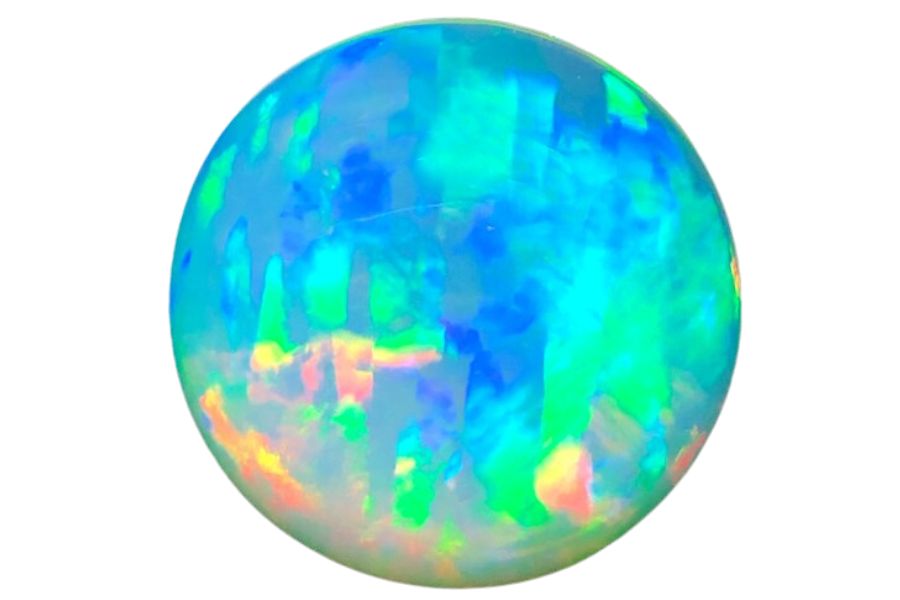Opal is a fascinating mineral known for its unique play of colors and diversity. There are many types of opal, each with distinct characteristics that make them special. For example, boulder opal, hyalite, and fire opal are all unique forms of this mineral.
When light hits an opal, it travels through tiny silica spheres inside the stone, creating a rainbow of flashing colors, known as “play-of-color.” The colors can include blues, greens, reds, and oranges, making each opal unique.
Each type of opal has its own story and conditions of formation, making the study of opals a captivating journey into the world of minerals. This diverse range of appearances and origins is part of what makes opals so intriguing.
The 14 Different Types Of Opal And What They Look Like
Opals are known for their shimmering play-of-color. These gems form over millions of years from silica and water, turning into the stunning stones we see today. Here are the different kinds of opal out there:
White Opal
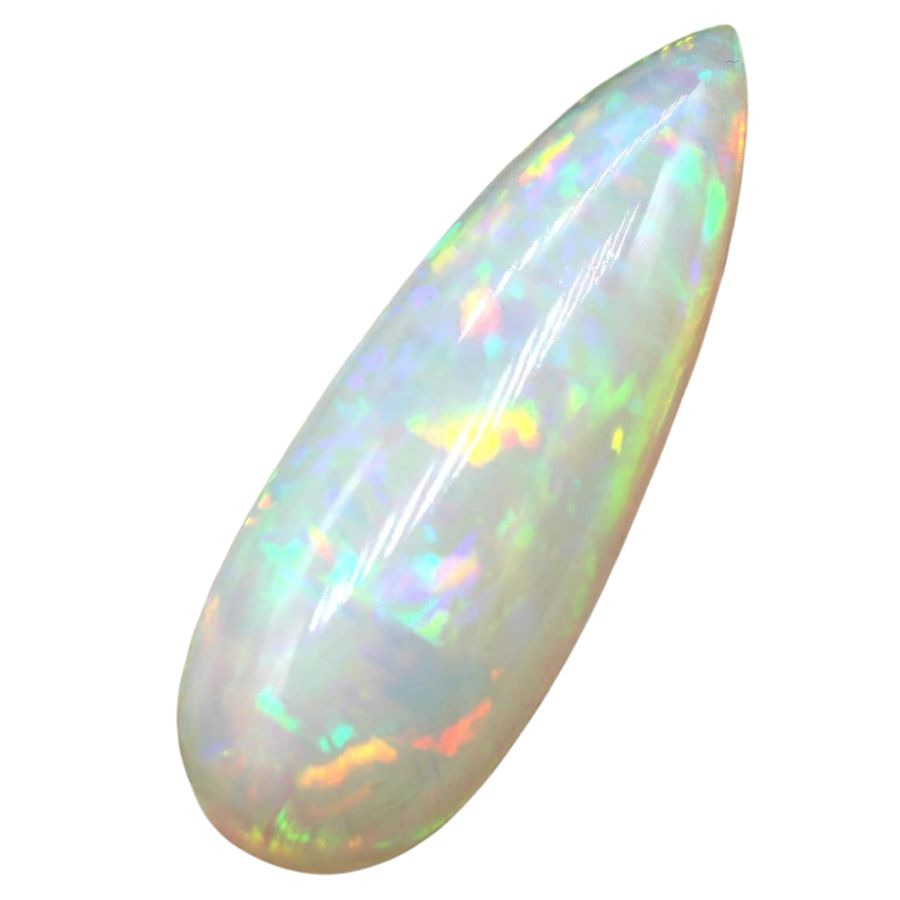
White opal is a captivating gemstone known for its milky or creamy base color, ranging from pure white to light grey. This type of opal is famous for its play-of-color, displaying a rainbow of hues that flash and move within the stone.
The colors can include vibrant greens, blues, reds, and oranges, making each white opal unique and eye-catching. The brighter and more varied the colors, the more prized the opal is.
The surface of white opal can be polished to a smooth, glassy finish, enhancing its mystical color play. It’s often cut into rounded or oval shapes and set into various types of jewelry, from rings and earrings to pendants and bracelets.
Where you can find white opal
White opal can typically be found in Australia. Outside of Australia, white opal can be found in places like Ethiopia and the United States.
If you want REAL results finding incredible rocks and minerals you need one of these 👇👇👇
Finding the coolest rocks in isn’t luck, it's knowing what to look for. Thousands of your fellow rock hunters are already carrying Rock Chasing field guides. Maybe it's time you joined the community.
Lightweight, mud-proof, and packed with clear photos, it’s become the go-to tool for anyone interested discovering what’s hidden under our red dirt and what they've already found.
Join them, and make your next rockhounding trip actually pay off.
What makes it different:
- 📍 Find and identify 140 incredible crystals, rocks, gemstones, minerals, and geodes across the USA
- 🚙 Field-tested across America's rivers, ranchlands, mountains, and roadcuts
- 📘 Heavy duty laminated pages resist dust, sweat, and water
- 🧠 Zero fluff — just clear visuals and straight-to-the-point info
- ⭐ Rated 4.8★ by real collectors who actually use it in the field
Common Opal
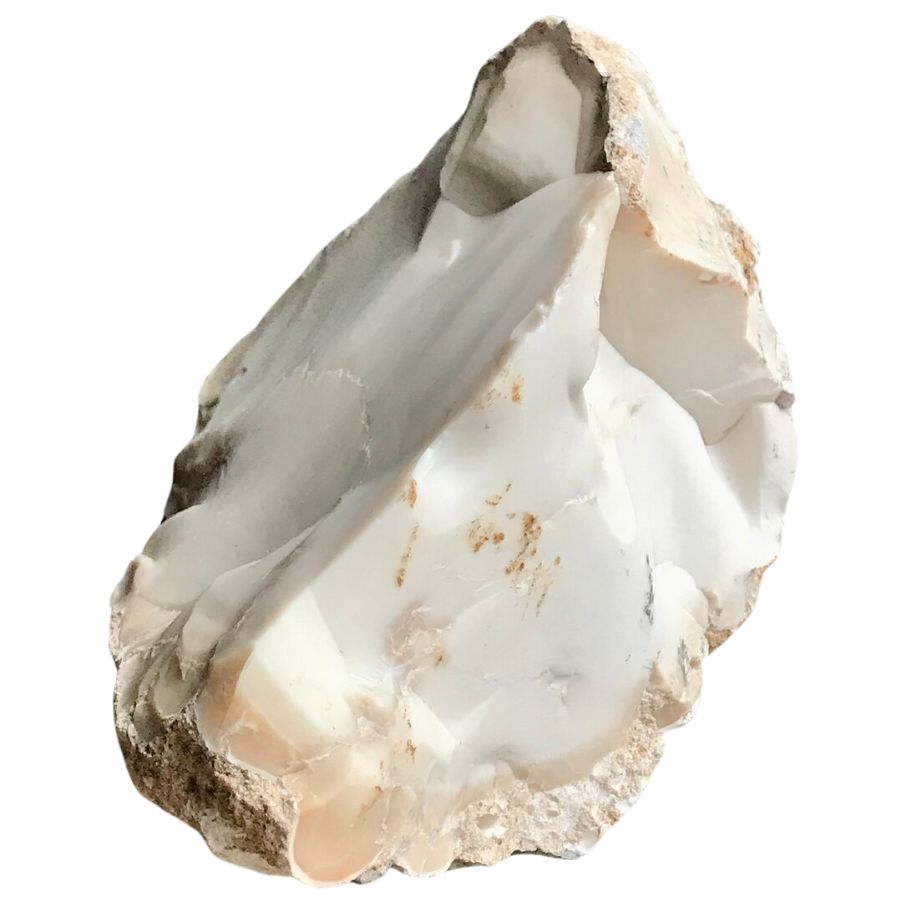
Common opal, or “potch,” is known for its simplicity and variety. Unlike the flashy precious opals, common opal doesn’t have play-of-color, but it has its own understated charm.
We find it all around the world, formed from silica-rich waters that seep into the earth, filling cracks and voids in the rock. Over time, this silica solidifies into what we know as common opal.
It comes in many colors, from pinks and blues to browns and yellows, often with a beautiful, waxy luster that makes it glow. Its solid, often opaque appearance gives it a hearty look that’s quite different from its glittering cousins.
Where you can find common opal
Common opal is found in many parts of the world, with significant deposits in Australia, Mexico, and the United States. In Australia, it’s mostly found in areas known for precious opals, like Coober Pedy.
In the United States, we’ve discovered common opal in states like Nevada and Oregon. For those interested in finding their own common opal, checking out our guide to rockhounding near you.
Boulder Opal
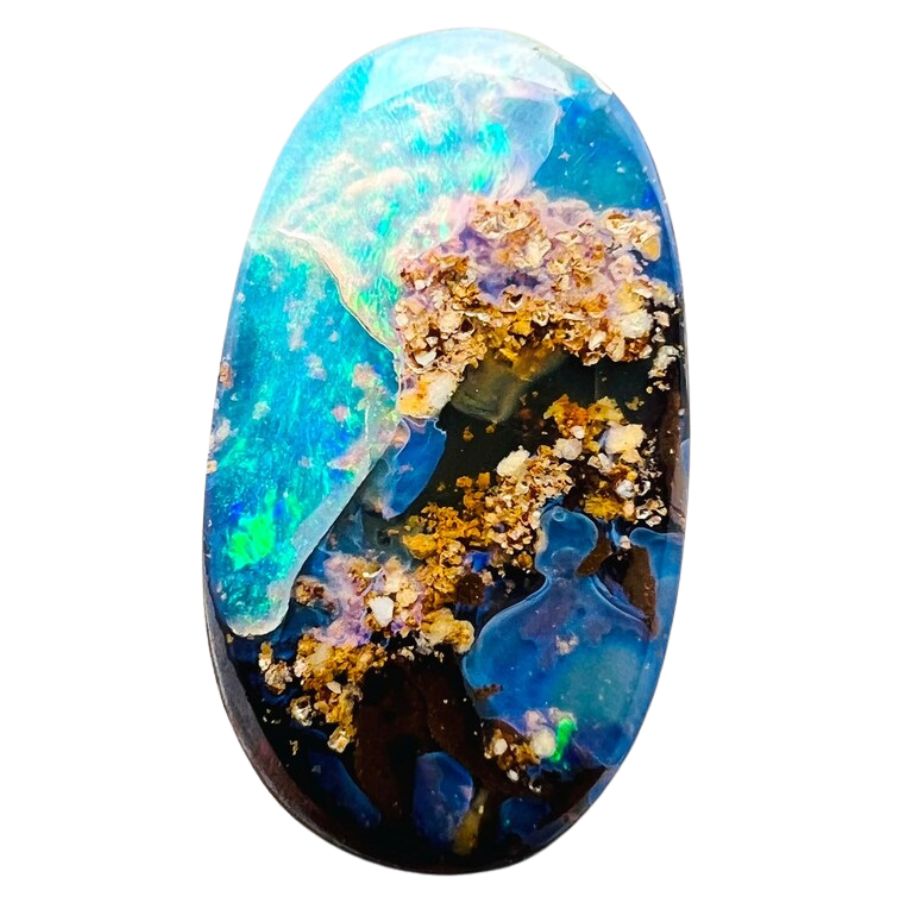
Boulder opal is an extraordinary type of opal that’s naturally attached to a host rock, typically ironstone, which often becomes part of the gem itself.
This combination creates a striking contrast between the opal’s vibrant play-of-color and the dark, earthy tones of the rock.
Boulder opals are admired for their brilliant flashes of color that can include the entire spectrum, making each piece uniquely captivating.
The opal forms in thin veins or patches within the rock, leading to a variety of shapes and sizes, often resulting in highly unique and natural pieces.
Jewelers appreciate boulder opal for its durability and natural beauty, often leaving the ironstone backing intact to enhance the stone’s stability and contrast. Its rugged look combined with the dazzling opal colors makes for distinctive jewelry pieces.
Where you can find boulder opal
Boulder opal is primarily found in Australia. Each mining area produces boulder opal with distinctive characteristics, giving a wide variety of patterns and colors unique to its location.
Peruvian Opal
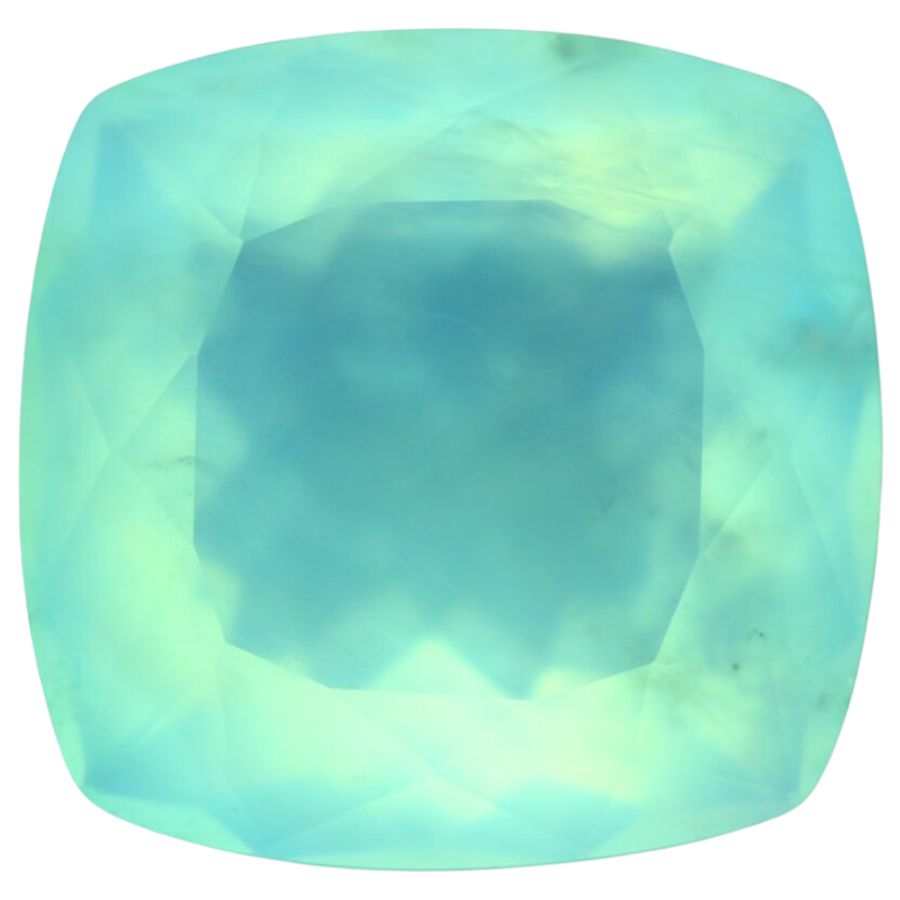
Peruvian opal, also known as blue opal, is a beautiful and rare gemstone with a range of colors from soft pastel blues to vibrant aqua and greenish hues.
Unlike other opals, it typically doesn’t display the flashy play-of-color, but its tranquil shades are highly valued. This opal has a translucent to opaque quality, often with a waxy luster that makes it glow subtly when polished.
Peruvian opal is often cut into smooth cabochons or faceted pieces. The smooth, cool colors resemble the serene landscapes and seas, making it a popular choice for those who prefer a touch of nature’s tranquility.
Where you can find Peruvian opal
Peruvian opal is primarily sourced from the Andes mountains in Peru. The most famous location for finding these opals is in the San Patricio area. Here, the opals are mined from volcanic rocks.
Hyalite
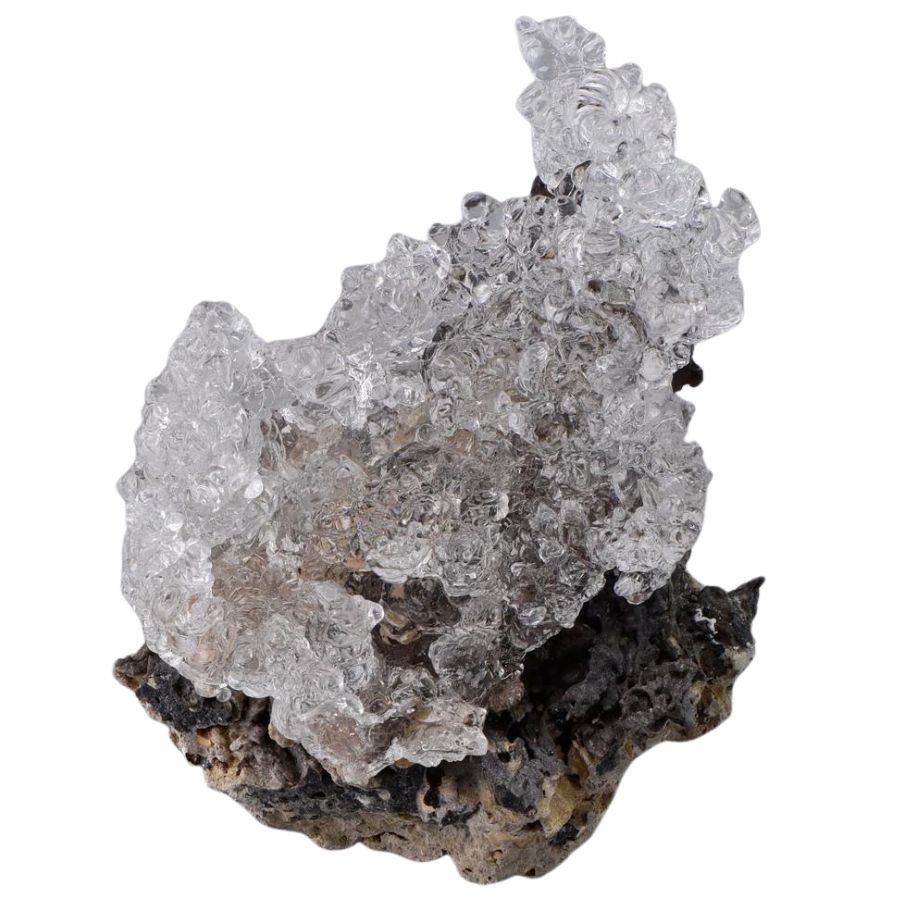
Hyalite is a unique and fascinating type of opal, known for its clear, glass-like appearance. Among the different types of opal, hyalite stands out because it glows with a bright green color under UV light.
It forms from silica-rich water, just like other opals, but its purity and lack of color play give it an clear, watery look.
Certain volcanic areas host hyalite, where the conditions are just right for forming this clear, beautiful gem. Hyalite is usually found in small nodules or crusts on other rocks, shining subtly in the daylight.
Where you can find hyalite
In Mexico, the opal mines near Zacatecas are famous for their beautiful and clear hyalite specimens. The United States also offers some great hyalite hunting, especially in the states of Arizona and Oregon.
Hyalite can also be found in Germany’s Eifel region, where its glow under UV light is just as stunning as in other parts of the world.
Chocolate Opal
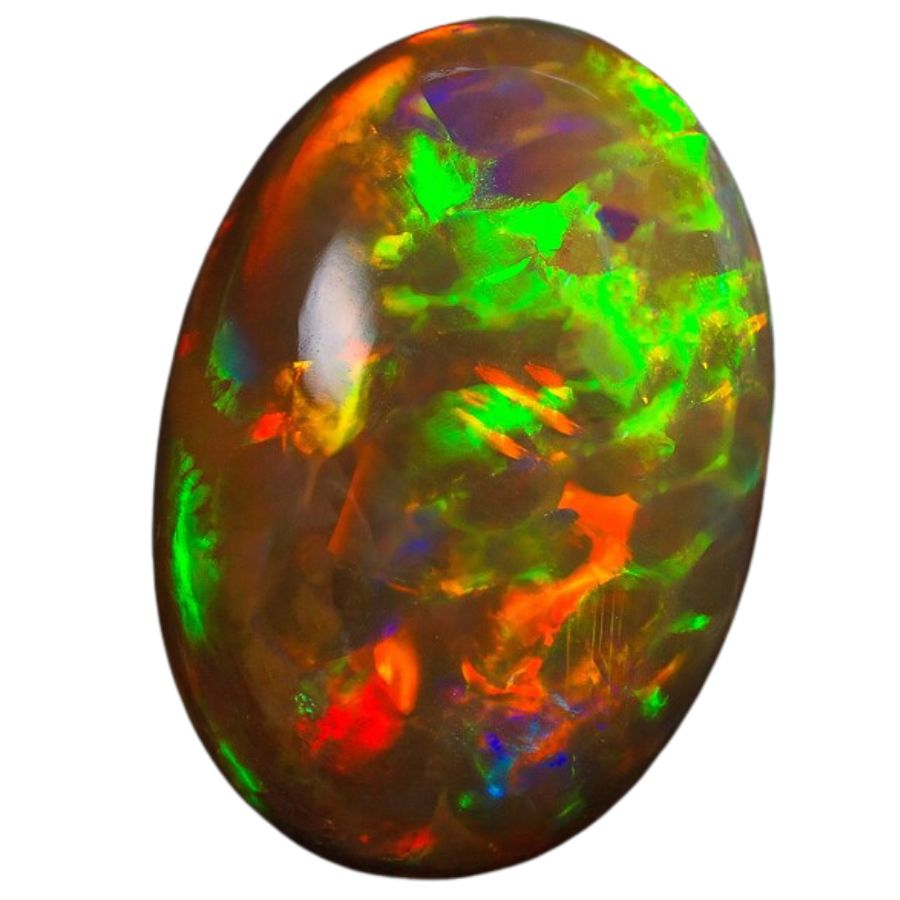
Chocolate opal is a delightful variety of opal with a rich, dark brown background that reminds one of delicious chocolate. This gemstone stands out because, despite its darker color, it still displays the famous play-of-color opals are known for.
The colorful flashes can include bright greens, reds, and blues, creating a stunning contrast against the chocolatey backdrop.
Found mainly in Ethiopia, chocolate opal is a rare find and a favorite among collectors and jewelry enthusiasts. Its unique appearance makes it highly desirable for use in various jewelry pieces, from rings to pendants.
Where you can find chocolate opal
Chocolate opal is mainly found in the volcanic regions of Ethiopia. The area around Yita Ridge is particularly famous for producing these rare brown opals.
Black Opal
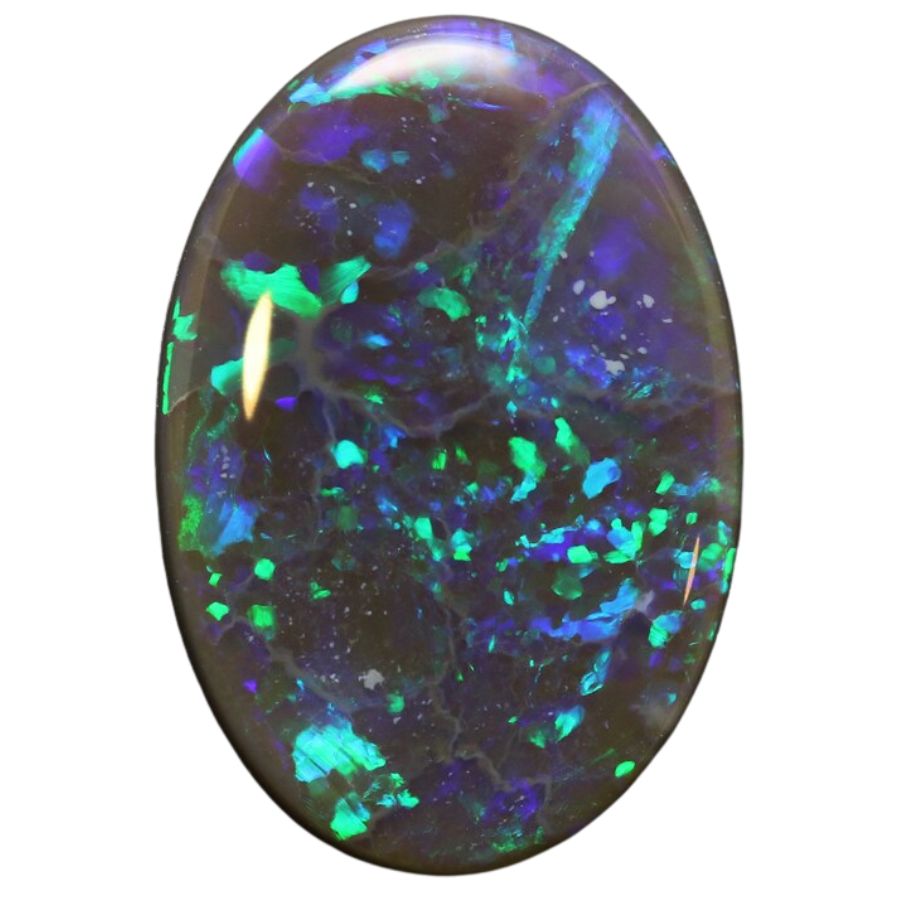
Black opal is a rare and captivating gemstone known for its dark body color, which can range from deep grey to black. This dark hue provides a stunning contrast to the vibrant play-of-color that opals are famous for.
Black opals are among the most sought after and valuable opals in the world, with their beauty and rarity commanding high prices. These gems are often set into jewelry where they can catch the light and show off their color play.
For those interested in the thrill of discovering beautiful stones like black opal, there’s a world of gem mining to explore. Check out our guide on finding gems near you, where you can uncover the secrets of gem hunting.
Where you can find black opal
Black opal is most famously found in Lightning Ridge, a small town in New South Wales, Australia. While Australia is the most renowned source, black opals can also be found in other parts of the world, like Ethiopia.
Hydrophane Opal
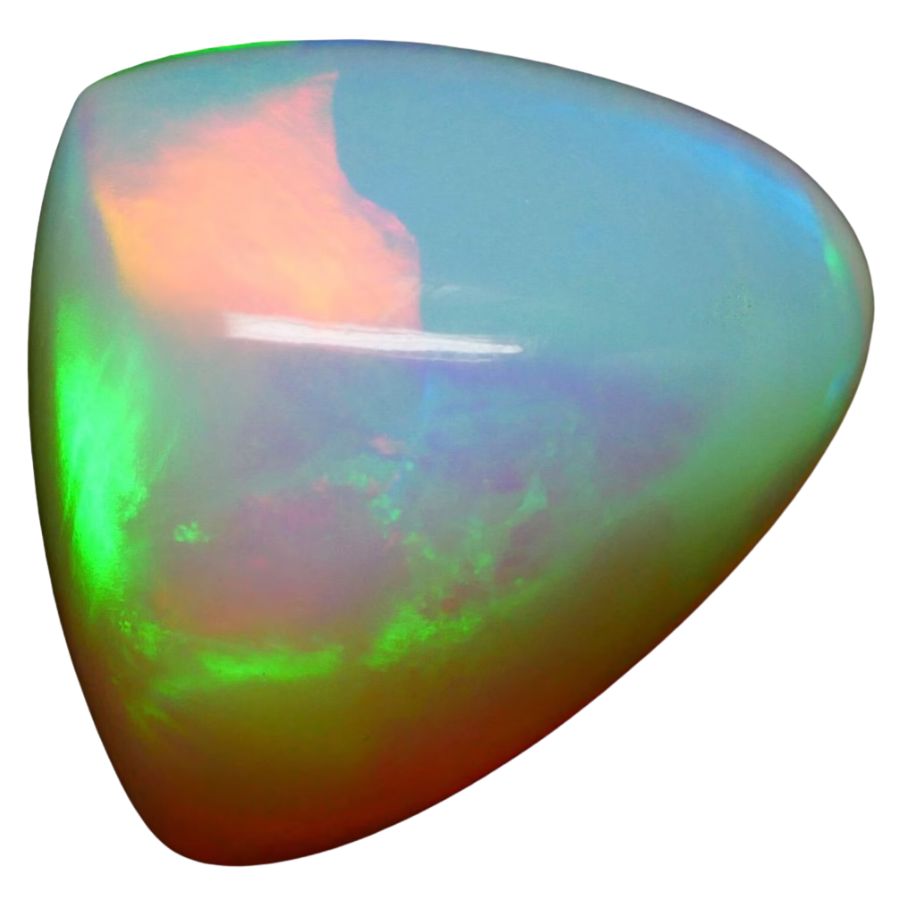
Hydrophane opal, also known as Welo opal, is a fascinating type of opal known for its ability to absorb water.
When dry, this opal might look ordinary or less vibrant, but once it soaks in water, it becomes clear and the colors become brighter and more pronounced.
This unique feature is due to its microscopic structure, which is more porous compared to other opals, allowing it to absorb water and change appearance.
However, absorbing water can make hydrophane opals more prone to damage. If a hydrophane opal gets wet, it’s important to let it dry naturally and not subject it to drastic temperature changes.
Where you can find hydrophane opal
Hydrophane opal is primarily found in Ethiopia, particularly in the Welo and Delanta regions. Besides Ethiopia, smaller deposits have been found in other parts of the world, like Australia and Brazil.
Jelly Opal
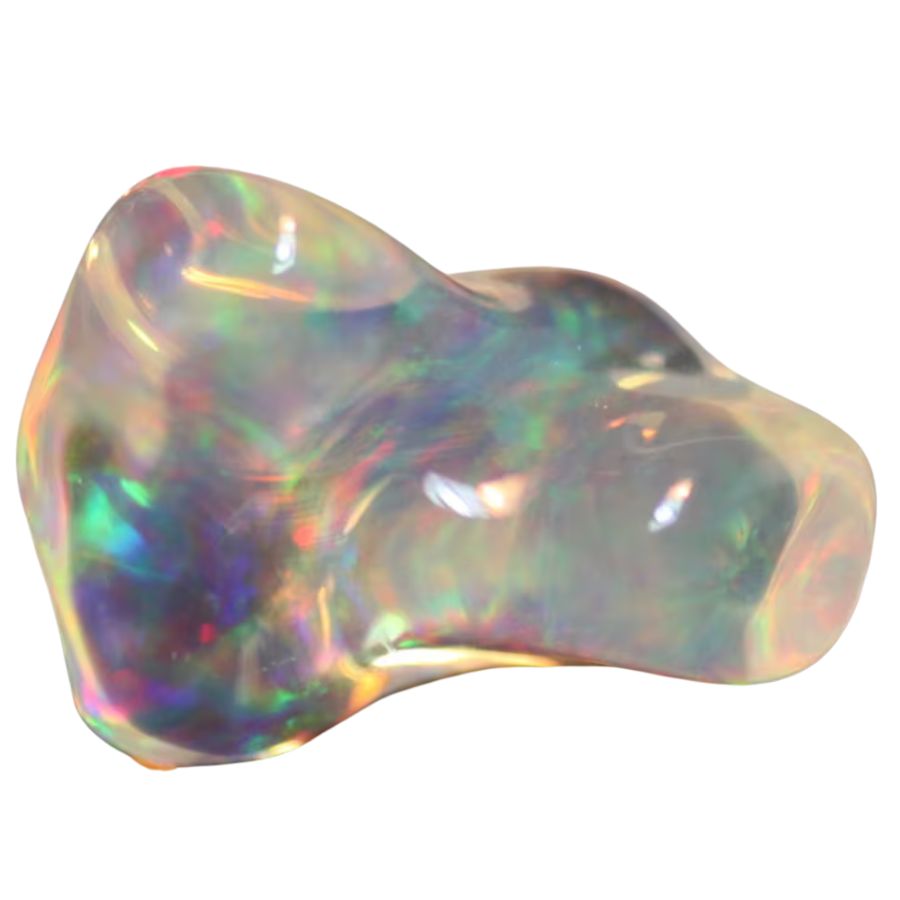
Jelly opal, also known as water opal, is a type of precious opal with a gelatinous appearance, looking almost like jelly. Its transparency and color vary, ranging from nearly clear to a soft, hazy blue or pink.
What makes jelly opal special is its translucency. Despite its delicate appearance, it’s a solid, silica-based gemstone, like all opals.
The play-of-color in jelly opals is subtle yet enchanting. Light dances through the gem, showing off soft pastel flashes or sometimes bright, fiery colors.
Where you can find jelly opal
Jelly opal can often be found well-known opal producing regions like Australia, especially in places like Coober Pedy and Lightning Ridge. Mexico, too, is a hot spot for these translucent beauties.
In the United States, the state of Nevada has yielded some lovely specimens.
Fire Opal
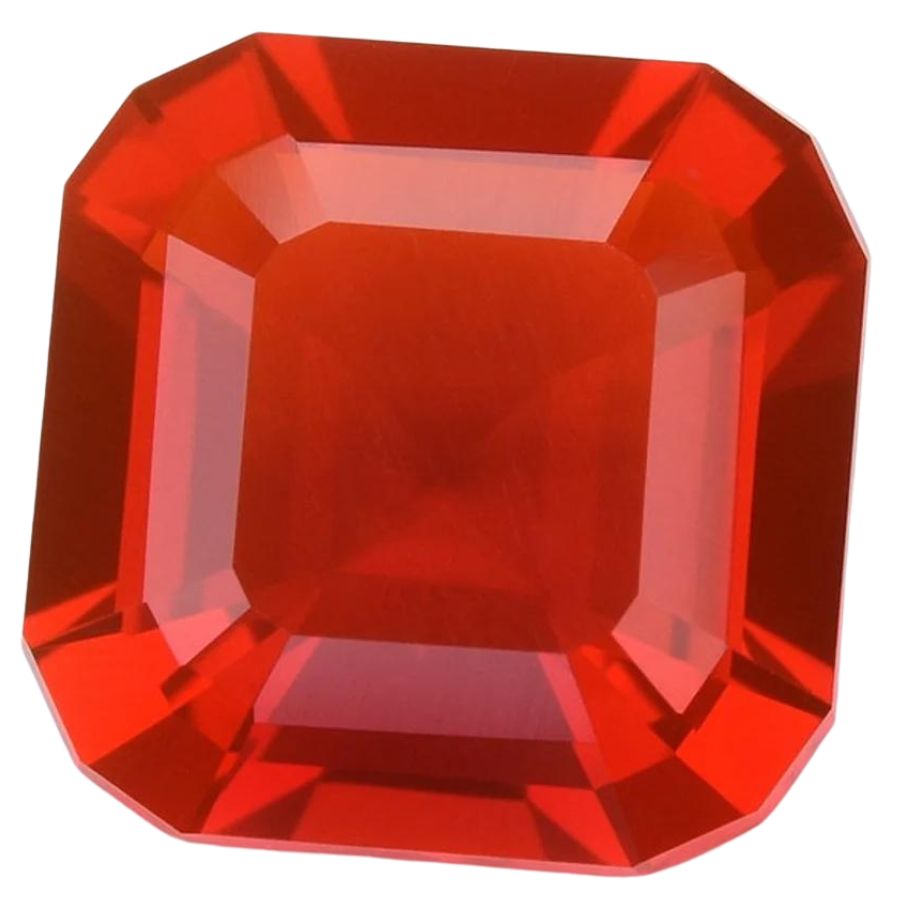
Fire opal is a vibrant and striking gemstone, known for its warm body colors ranging from yellow to deep orange to red, much like the colors of a flame.
Unlike many other opals, fire opals are often transparent or translucent and might not always display the characteristic play-of-color.
These opals are particularly prized for their intense and vivid colors. They are often cut into faceted shapes, allowing them to catch the light and sparkle, or into smooth cabochons to showcase their color depth.
The price of opal, including fire opal, varies widely depending on the color, brightness, pattern, and size of the stone. The rarity and uniqueness of each opal also contribute to its value.
Fire opals are sought after and relatively rare, and can thus fetch a higher price.
Where you can find fire opal
Fire opal is primarily mined in Mexico, especially in the state of Querétaro. Brazil and Honduras are also known for producing fire opal, as well as Ethiopia and Australia.
Dendritic Opal
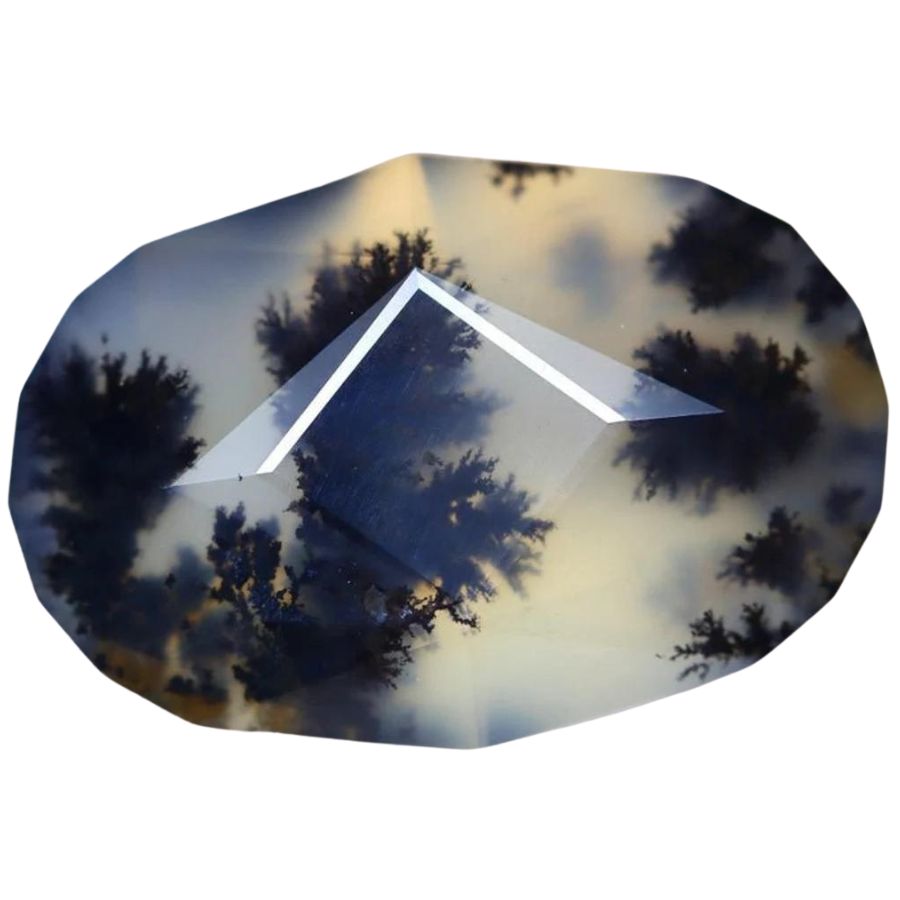
Dendritic opal is a unique type of opal characterized by its intriguing inclusions that resemble trees or ferns. These inclusions are called dendrites, made from manganese or iron oxide, and create fascinating, natural patterns within the stone.
Dendritic opal itself is usually a milky white or soft grey color, providing a perfect backdrop for the dark, tree-like dendrites. This contrast makes each piece one-of-a-kind, as the patterns vary from stone to stone.
Despite not displaying the play-of-color typical of other opals, its unique appearance captivates enthusiasts and collectors.
Where you can find dendritic opal
Dendritic opal can be found in various locations around the world, but some of the best specimens come from Turkey. We’ve also found this type of opal in the United States, particularly in the rock-rich states of Montana and New Mexico.
Opalized Wood
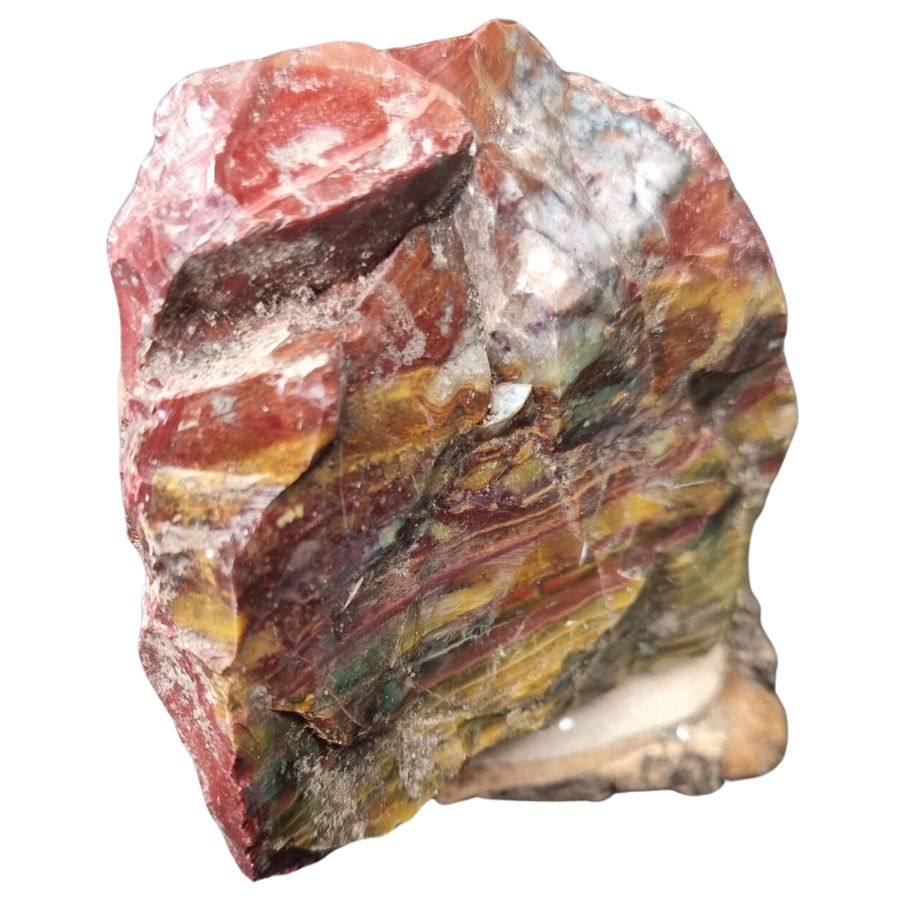
Opalized wood is a fascinating type of fossil where ancient wood has turned into opal over millions of years.
This process occurs when the wood gets buried under sediment and silica-rich water flows through, gradually replacing the organic material with opal.
The result is a beautiful, stone-like replica of the original wood, preserving the tree rings and textures that once existed.
Opalized wood primarily consists of common opal, known for its pearly luster and variety of colors, from whites and creams to blues and greens. Sometimes, opalized wood can have play-of-color, but this is much less common.
Where you can find opalized wood
Opalized wood can be found in Australia, the United States, and Indonesia.
Crystal Opal
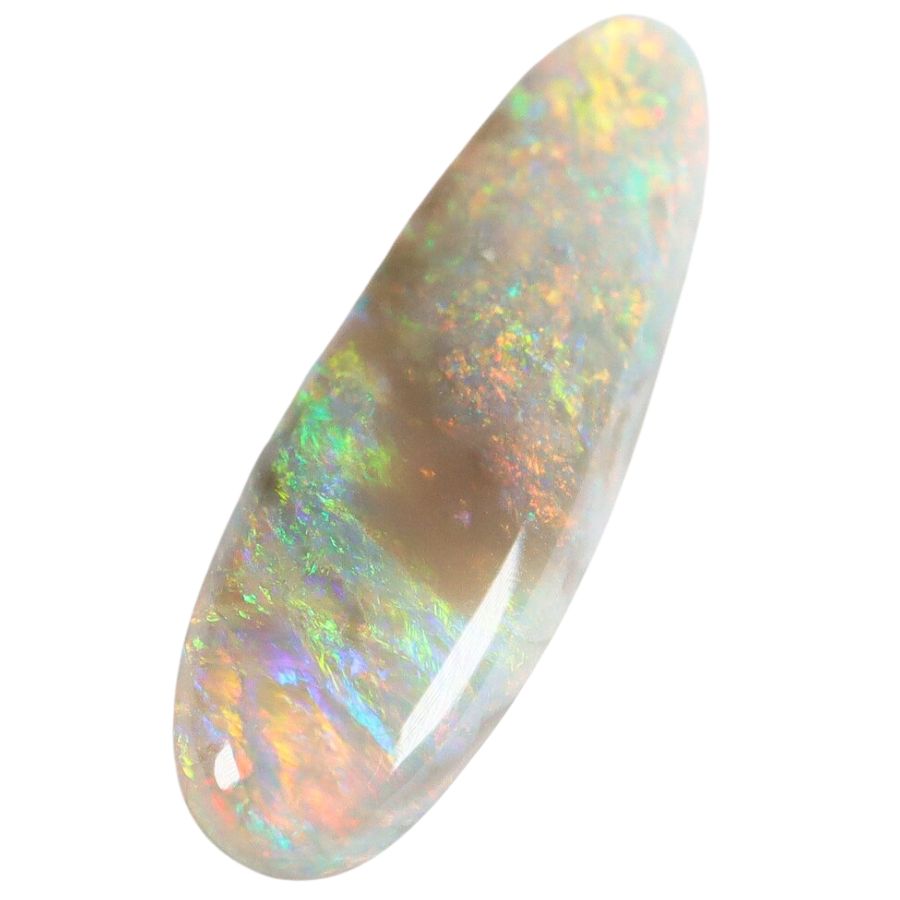
Crystal opal is a type of precious opal known for its transparency and the brilliant play-of-color within. What makes crystal opal distinct is its see-through body, which allows light to pass through, enhancing the opal’s internal colors.
This transparency showcases the opal’s color play in a way that seems to bring the gem to life. The colors can range from bright reds, greens, and blues to softer pastel shades, shifting and shimmering as the stone moves in light.
This type of opal is sought after for its unique appearance, where the clarity and depth enhance what opal looks like, creating a stunning visual effect.
Where you can find crystal opal
Crystal opal is predominantly found in Australia. Ethiopia is another country known for producing beautiful crystal opals, contributing to the global supply with its unique varieties.
Pistachio Opal
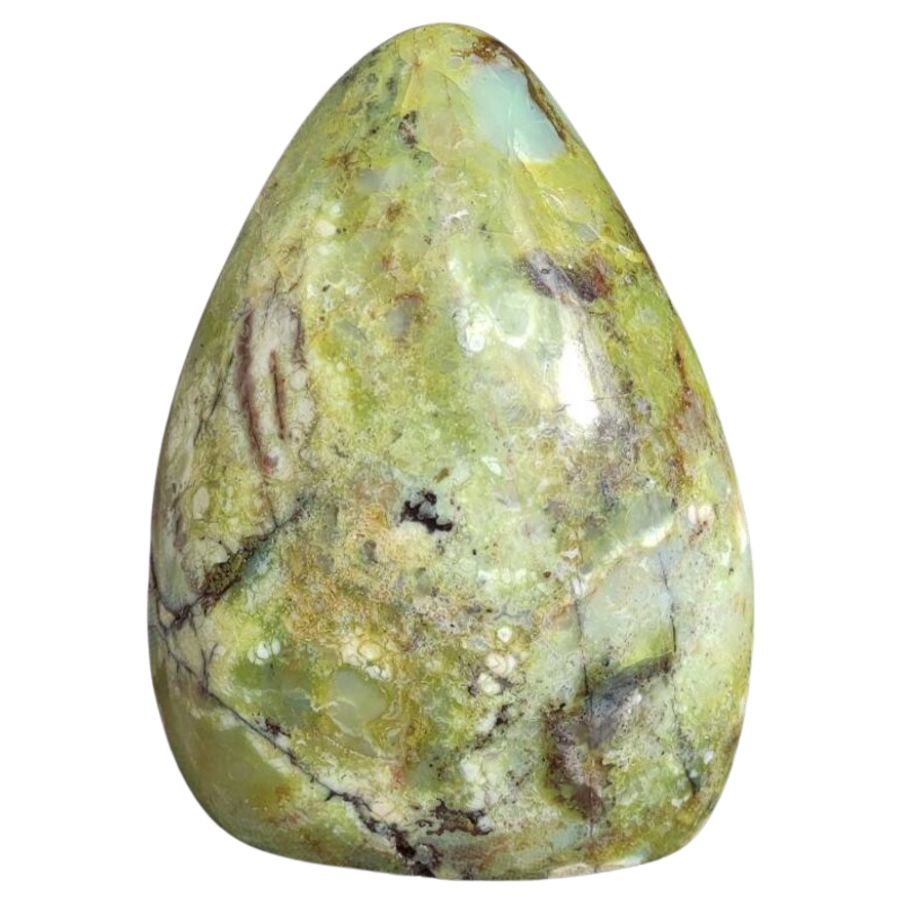
Pistachio opal is a delightful variety of opal known for its creamy green color, reminiscent of pistachio nuts. This type of opal typically displays a soft, pale green hue with a smooth, waxy luster that makes it quite appealing
Unlike some other opals, pistachio opal usually does not show the play-of-color but is instead appreciated for its tranquil and uniform green coloration. It’s also typically opaque.
Pistachio opal is often used in jewelry as cabochons or beads, or polished and used as palmstones.
Where you can find pistachio opal
Pistachio opal is mainly found in the United States, with Oregon being a well-known hotspot for this green gem.

